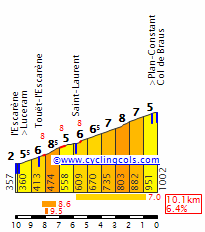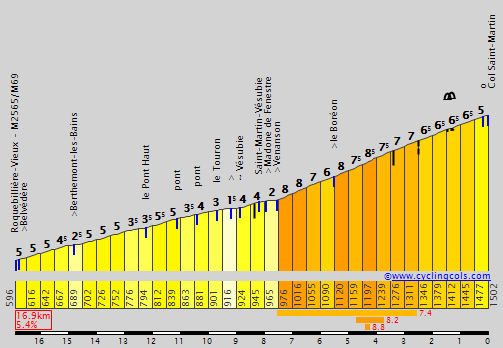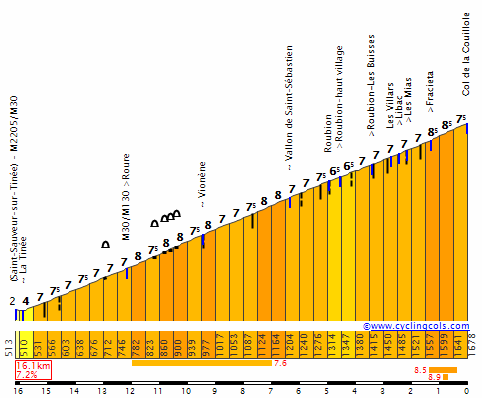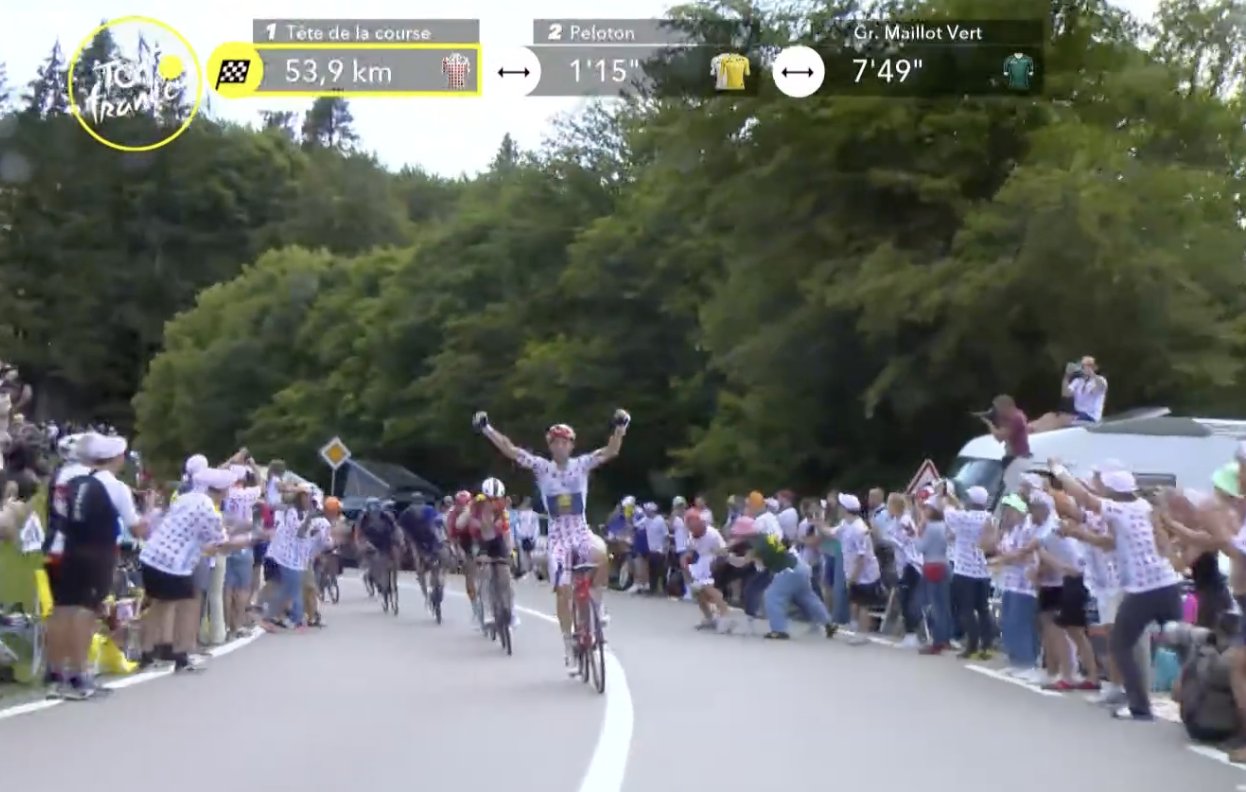Stage 20: Nice - Col de la Couillole, 132.8k
After the well-designed stage 19, this is perhaps the most disappointing stage of the race. Probably the only chance in our lifetimes to design a final mountain stage in this area, and they’ve come up with a route where the final climb is the hardest and the penultimate climb is far easier. In addition, having a big MTF here has the potential to incentivise the waiting game on the Isola 2000 stage. On the plus side, at least it’s up and down almost throughout.The route
The stage starts where the race will end the day after, in Nice. The city was founded by Greek colonists in the fourth century BC. From the Middle Ages until the 19th century, it was more Italian than French – although it was often controlled for short periods by first the Provence and later France, it was usually in Italian hands, being a part of the Duchy of Savoy for a period spanning almost six centuries (with interruptions). In the 19th century, it was a majority-Italian city, albeit with a substantial French minority. In 1860, Nice and surroundings were ceded by Savoy to France (together with Savoy proper – I discussed this in my stage 5 analysis), the annexation ‘validated’ by a sham referendum. This enraged many Italian nationalists, including the ‘people’s leader’ of the movement, Giuseppe Garibaldi, who hailed from the city. In 1871, the first French elections following the final dissolution of monarchy, pro-Italian lists led by Garibaldi dominated in Nice, and an uprising broke out. The French successfully suppressed this, and Niçard Italians were left to choose between forced Frenchification (which had already started in 1860) and emigration. This episode also helped sow the poisonous seeds of Italian irredentism.
Despite this turbulent period, the development of tourism, which had already started towards the end of the Savoy era, only accelerated. Originally the playground of the wealthy English, Nice and the surrounding riviera became the favourite haunt of the well-off from most of Europe, growing to become the most-visited French tourism destination not named Paris. It was also a popular spot for artists and writers, which explains the city’s wealth of museums. Of course, it is perhaps an even more popular spot today among cyclists, with seemingly half the peloton living in the area, and between Paris-Nice and a litany of Tour stages (most recently the Grand Départ in 2020), it can definitely claim to be a cycling heartland.

After about 10 kilometres of false flat, the climbing starts with another piece of cycling heritage: Col de Braus. While it hasn’t been seen since 1961, it was a staple in the Tour’s early days, with no fewer than 25 ascents prior to the Second World War. The cat. 1 feels just about merited, although very generous compared to what is to come.

From that classic of early cycling, we move to a classic of motorsports: Col de Turini, the showpiece of the famed Monte Carlo Rally. We climb the side used as a descent there and descend the side climbed by both the cars as well as the riders in the 2020 Tour and the 2019 and 2022 Paris-Nice MTFs.

The penultimate climb of the stage is the Col de la Colmiane, another one that should be familiar. While the Paris-Nice MTFs and the 2020 Tour used the other, harder side, this one is the usual lead-in to Couillole and has been used as such by both Paris-Nice and the Mercan’Tour Classic. The intermediate sprint is on its lower slopes in Saint-Martin-Vésubie, right before the proper climbing starts.

Its descent backs directly into the final big climb of this Tour, Col de la Couillole. It has only been seen once before in the Tour, but that happened to be in one of its most famous stages: the 1975 epic to Pra-Loup where Merckx’ dominance shattered so abruptly. It has resurfaced of late, with MTFs in Paris-Nice in 2017 and 2023 and as the hardest climb of the Mercan’Tour Classic, of which the finale (perhaps not so much the one this year) would have been far better suited to a role as the final mountain stage. Once again, this should probably have been a HC.


There really isn’t much else to say about the finish, it’s just a pass in the relative middle of nowhere, definitely giving a Vuelta-esque vibe.

What to expect?
It could definitely get hectic with the lack of flat, but it will be hard to actually make the difference before the MTF.












